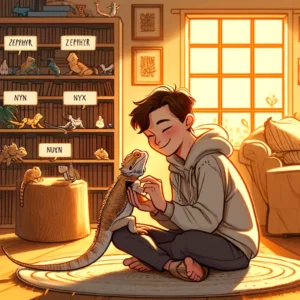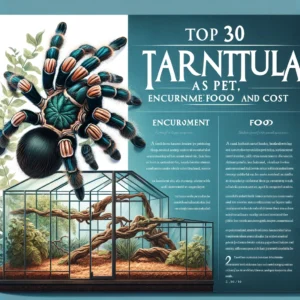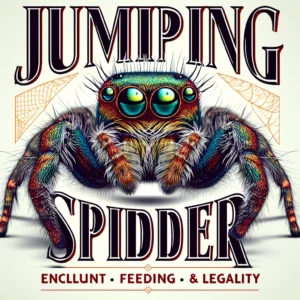Introduction
- Brief overview of the importance of nail care in bearded dragons.
- Mention how proper nail care contributes to the health and well-being of the bearded dragon.
Nail care is a critical aspect of maintaining the health and well-being of bearded dragons, often overlooked by many pet owners. These reptiles, known for their distinct personalities and interactive behavior, require regular grooming to prevent the complications of overgrown nails, such as scratches to themselves or their owners, and entanglement in enclosure furnishings. In their natural habitat, bearded dragons naturally wear down their nails through daily activities. However, in captivity, the lack of abrasive surfaces can lead to nails growing too long, potentially causing discomfort or even affecting the dragon’s mobility. Proper nail maintenance not only ensures the comfort and safety of these beloved pets but also prevents infections and promotes overall health. Through routine inspections, natural abrasion, and careful trimming, owners can significantly contribute to their bearded dragon’s quality of life.
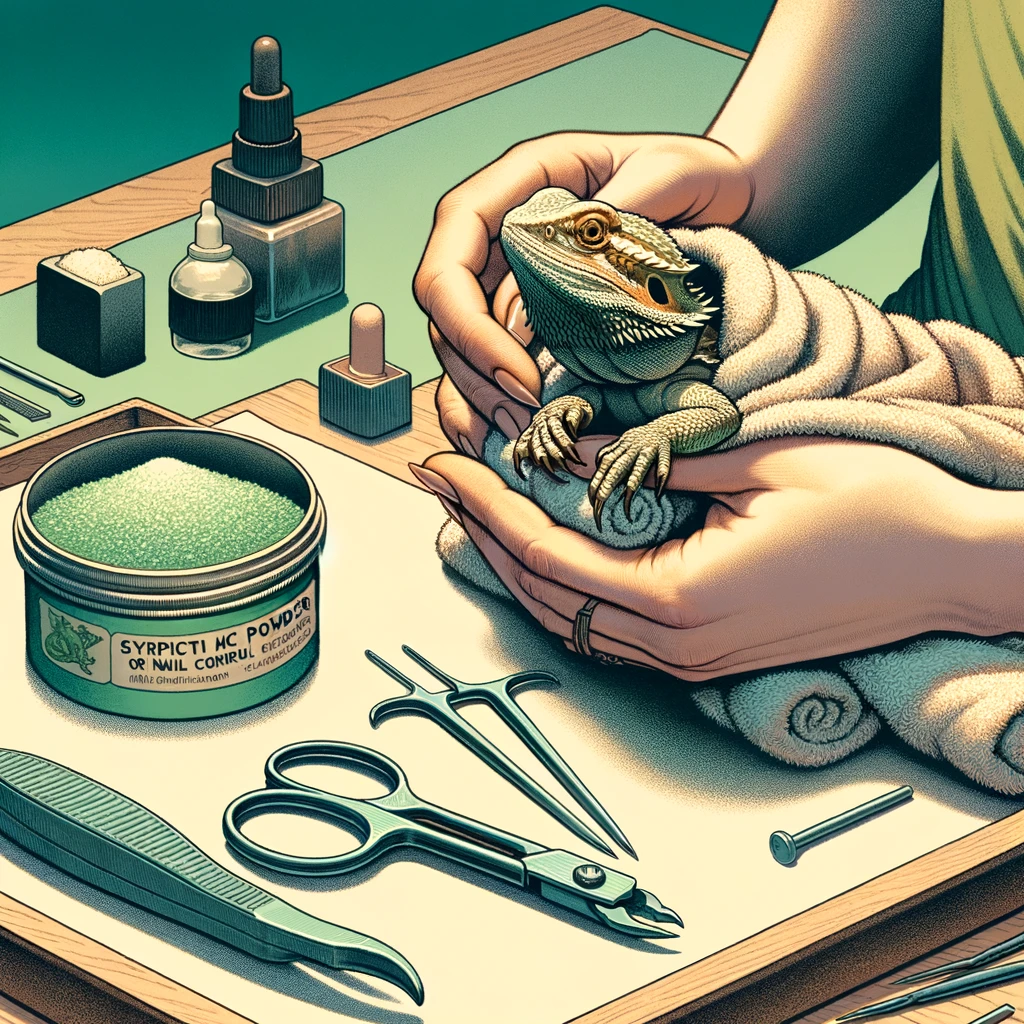
Understanding Bearded Dragon Nails
- Explanation of bearded dragon nail anatomy and growth patterns.
- Discussion on why nail care is necessary for bearded dragons in captivity.
Bearded dragon nails are similar to those of other reptiles, consisting of a hard outer shell made of keratin that continuously grows throughout their life. This growth pattern necessitates regular maintenance to prevent overgrowth and the problems that come with it. In the wild, bearded dragons naturally wear down their nails through activities like climbing and digging, effectively managing their length and sharpness.
However, in captivity, without adequate abrasive surfaces to mimic these natural behaviors, their nails can grow too long or become too sharp, potentially leading to injuries for both the bearded dragon and its handler. Overgrown nails can also interfere with the bearded dragon’s ability to move and climb, impacting its physical health and well-being. Therefore, understanding the anatomy and growth patterns of bearded dragon nails is crucial for owners to ensure their pets receive the necessary care to maintain their nails at a healthy length, preventing discomfort and promoting overall health.
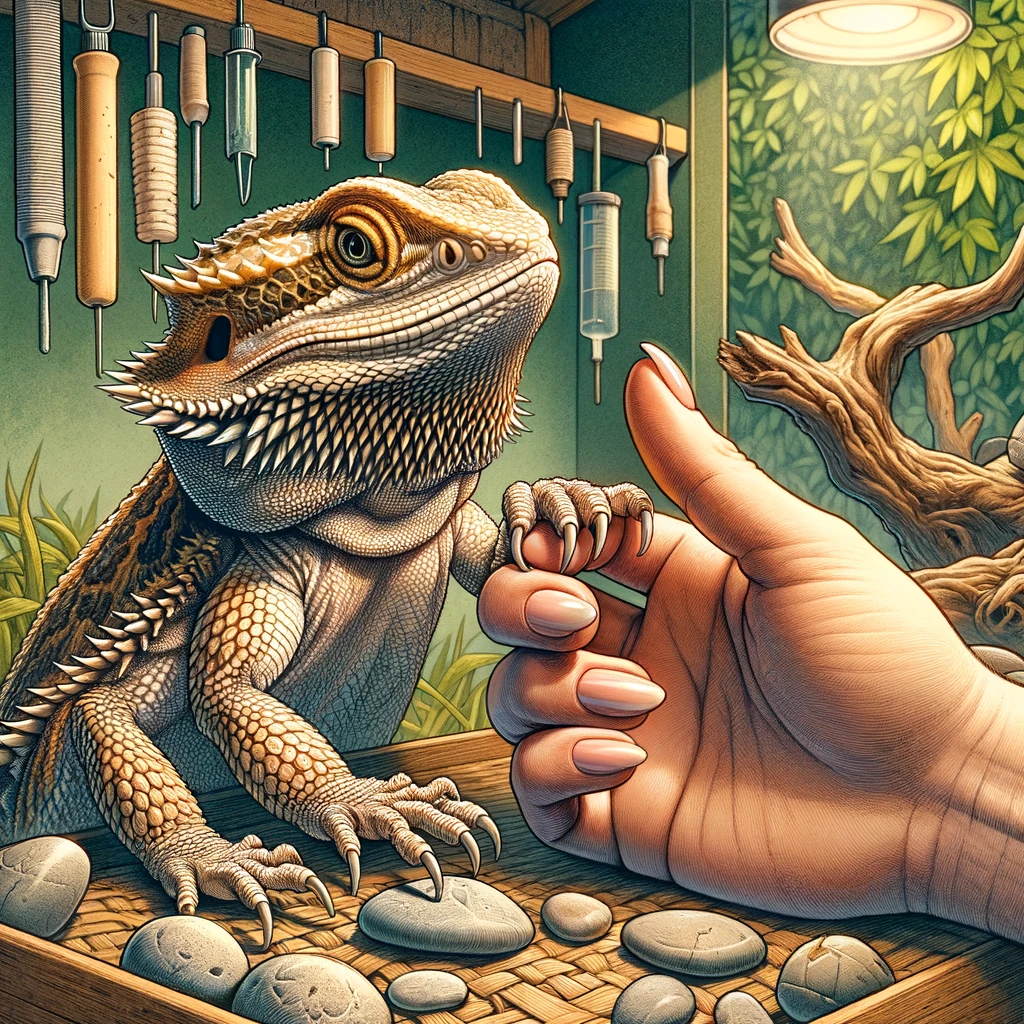
Regular Inspection and Maintenance
Inspection
Regular inspection and maintenance are key to preventing overgrown or unhealthy nails in bearded dragons. It’s advisable to inspect their nails at least once a month to monitor their length and condition. Healthy nails should be smooth, without cracks or splits, and maintain a length that doesn’t curve under or hinder the dragon’s ability to move. Unhealthy nails might appear discolored, overly brittle, or infected, indicating potential health issues that require attention.
Providing Natural Abrasion
To mimic the natural abrasion bearded dragons would experience in the wild and help maintain nail length, incorporating certain substrates and decorations into their enclosure is beneficial. Rough surfaces like natural rocks, unpolished wood, or textured tiles can effectively wear down nails as the dragon climbs and moves around.
The enclosure’s setup should encourage active behavior, ensuring the bearded dragon engages with these surfaces regularly. Strategically placing these abrasive materials where they are likely to be used, such as under basking lights or near food and water dishes, can naturally assist in nail maintenance, reducing the need for frequent trimming and keeping your bearded dragon’s nails healthy.
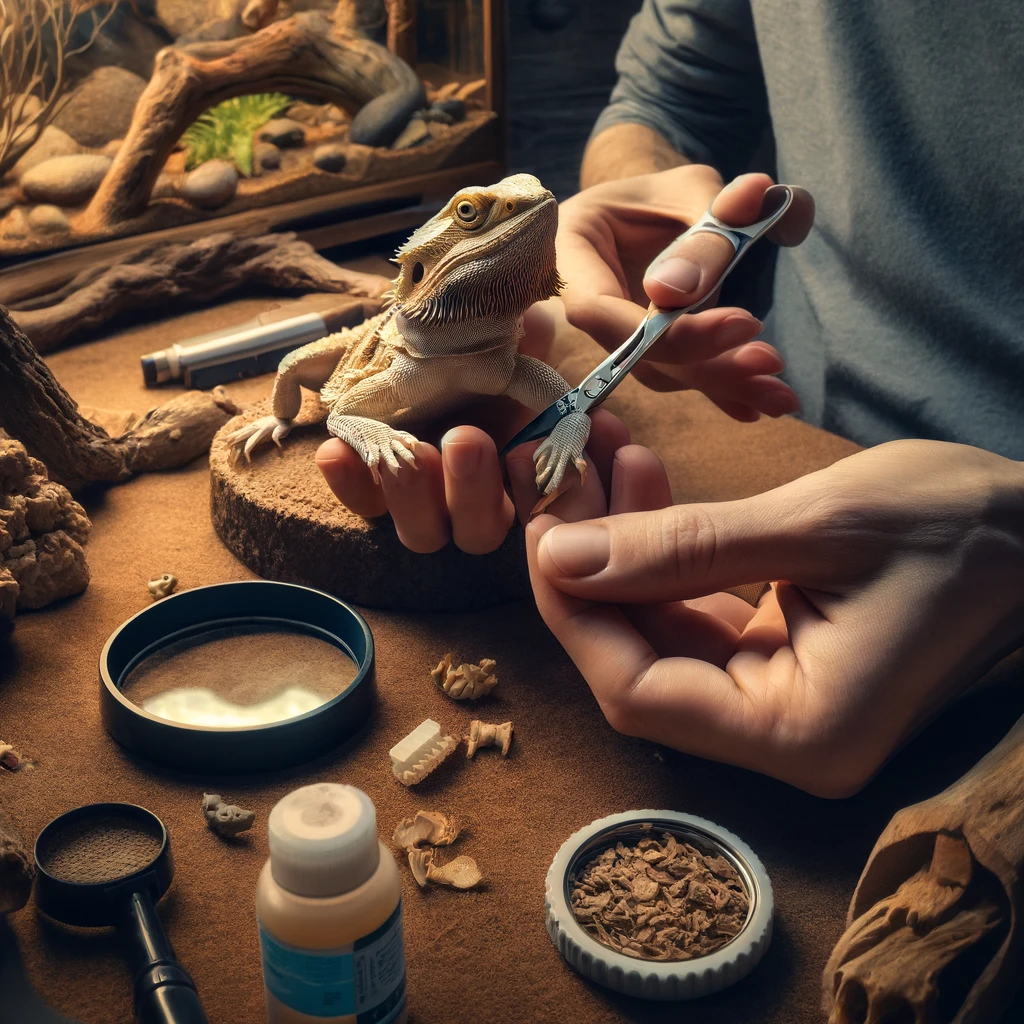
Preparing to Trim
Tools Needed:
- A pair of sharp, small nail clippers or a reptile nail trimmer.
- Styptic powder or cornstarch, to stop bleeding in case the quick is accidentally cut.
Handling Your Bearded Dragon:
- Approach your bearded dragon calmly to avoid stress.
- Gently hold the dragon in a comfortable position, securing its body while exposing the foot. It may help to wrap the body lightly in a soft towel, leaving only the limb you are working on exposed.
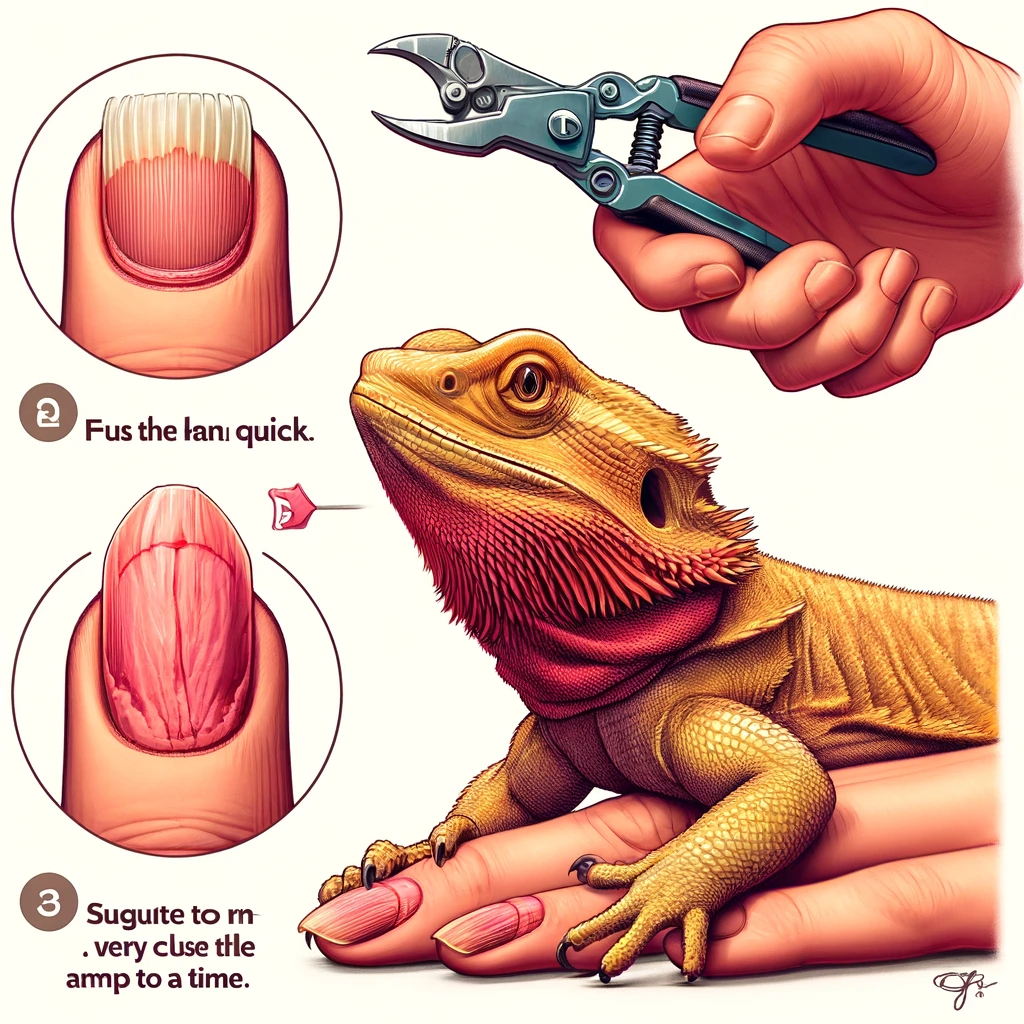
The Trimming Process
Step-by-Step Guide:
- Identify the Quick: The quick is the pink part inside the nail where blood vessels and nerves are located. Avoid cutting into this area.
- Trimming: Clip just the tip of the nail, taking care not to cut too close to the quick. If the nails are dark and the quick is hard to see, trim a very small amount at a time.
- Angle of Cut: Cut the nail at a slight angle, mimicking the natural shape of the nail.
Avoiding the Quick:
- If your bearded dragon has clear or light-colored nails, you can usually see the quick. Trim just beyond this area.
- For dark nails, err on the side of caution and only trim a small amount of the nail.
If You Cut the Quick:
- Don’t panic. It can happen even with careful trimming.
- Apply a small amount of styptic powder or cornstarch to the tip of the nail to stop the bleeding.
- Comfort your bearded dragon and give them a moment before continuing with the rest of the nails.
Remember, patience and care are key. If you’re uncertain or uncomfortable performing the trim, consult a vet or a professional groomer experienced with reptiles.
Preventing Infections and Injuries
Hygiene During Trimming:
- Disinfect nail clippers or trimmers before and after use to prevent the spread of bacteria.
- Wash your hands thoroughly before handling your bearded dragon to minimize the risk of transmitting infections.
Aftercare:
- After trimming, observe the nails for any signs of bleeding or distress.
- Keep the enclosure clean and free of sharp objects that could cause injuries to the newly trimmed nails.
Signs of Infections or Issues Post-Trimming:
- Redness, swelling, or discharge around the nails.
- Unusual behavior such as reluctance to walk or climb, which could indicate pain or discomfort.
- If any of these signs are observed, it’s essential to consult a veterinarian promptly to address the issue and prevent further complications.
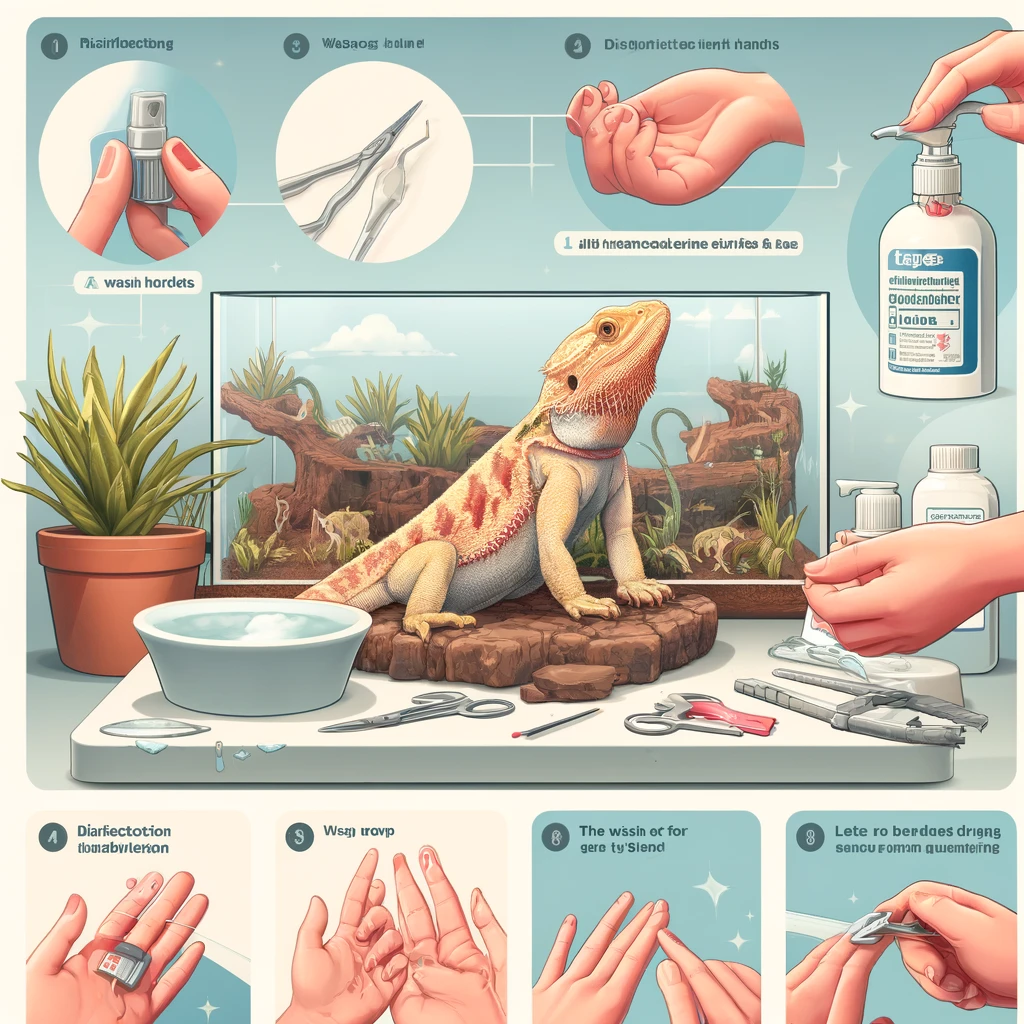
Professional Care
When to Seek Professional Help:
- If you’re uncomfortable or unsure about trimming your bearded dragon’s nails yourself.
- When nails are severely overgrown or if there are signs of infection or injury that you are not equipped to handle.
The Role of Veterinarians:
- Veterinarians can provide professional nail trimming, ensuring it’s done safely and correctly.
- They can also offer advice on nail care, enclosure setup, and overall health maintenance to prevent future issues.
- In cases of infections or injuries, a veterinarian can prescribe treatment to address the problem effectively.
Professional care can be invaluable in maintaining your bearded dragon’s nail health, especially for owners who are new to reptile care or when special health concerns arise. Regular vet check-ups also contribute to the early detection and treatment of potential health issues, ensuring your bearded dragon leads a long, healthy life.
FAQs on Bearded Dragon Nail Care
Q1: How often should I trim my bearded dragon’s nails?
- A: The frequency of nail trimming varies with each bearded dragon, but a general guideline is to inspect the nails once a month and trim as needed when they appear overgrown or sharp.
Q2: Can I use human nail clippers to trim my bearded dragon’s nails?
- A: While it’s possible to use human nail clippers, small pet nail clippers or a reptile nail trimmer are recommended for more precise and safe trimming.
Q3: What if I accidentally cut the quick of my bearded dragon’s nail?
- A: If you cut the quick, apply styptic powder or cornstarch to the nail to stop the bleeding. It’s a common accident, and while it can be stressful for both you and your pet, it usually heals well with proper care.
Q4: How can I make nail trimming less stressful for my bearded dragon?
- A: Ensure your bearded dragon is calm and comfortable before starting. You can gently wrap them in a soft towel, exposing only the leg you’re working on. Handling them regularly can also make them more accustomed to being touched, reducing stress during nail trimming.
Q5: Is it necessary to trim the nails if my bearded dragon has rocks and branches in its enclosure?
- A: While natural abrasives like rocks and branches can help keep nails at a manageable length, some bearded dragons may still require occasional trims. Regularly inspect the nails and trim as necessary.
Q6: What are the signs of an infection after nail trimming?
- A: Look out for redness, swelling, discharge, or any changes in behavior such as limping or reluctance to move. If you notice any of these signs, consult a veterinarian.
Q7: Should I bathe my bearded dragon before or after trimming its nails?
- A: Bathing your bearded dragon before trimming can soften the nails, making them easier to cut. However, ensure the nails and your bearded dragon are completely dry to prevent slipping and to have better control during the trimming process.
Q8: Can overgrown nails affect my bearded dragon’s health?
- A: Yes, overgrown nails can lead to discomfort, affect mobility, and potentially cause injuries. Keeping nails trimmed helps prevent these issues.
Q9: My bearded dragon hates getting its nails trimmed. What should I do?
- A: If nail trimming is too stressful for your bearded dragon, consider seeking professional help from a vet or a reptile specialist who is experienced in handling reptiles gently and effectively.
Q10: Can I file my bearded dragon’s nails instead of clipping them?
- A: Yes, filing the nails can be a gentle alternative to clipping, especially for minor adjustments. However, it may not be effective for significantly overgrown nails.

Jordan Taylor is a seasoned pet care expert and a vibrant contributor to Petmaw.com. With over a decade of experience in veterinary science, Jordan brings a wealth of knowledge and a deep passion for animals to every article. After earning a degree in Veterinary Medicine from the University of Alaska Anchorage, Jordan spent several years working in a busy veterinary clinic, where they honed their skills in pet nutrition, behavior, and wellness.
Jordan’s love for animals isn’t just professional; it’s a fundamental part of their life. Home is shared with three rescue Sloth, two cats, and a small flock of backyard chickens, each with their own rescue story and special place in Jordan’s heart. This personal connection to animals shines through in Jordan’s writing, making their advice not only expert but also empathetic and practical for pet owners.
At Petmaw.com, Jordan is dedicated to providing pet owners with the latest research, trends, and tips in pet care, from innovative feeding strategies to understanding the subtle signs of pet health issues. Whether you’re a seasoned pet owner or new to the pet parenting world, Jordan’s insights aim to enhance the well-being of pets and deepen the human-animal bond.
In their spare time, Jordan is an avid hiker, often found exploring the trails with their dogs. They also volunteer at local animal shelters, offering their expertise and helping animals in need find forever homes. Jordan’s commitment to animal welfare and passion for sharing knowledge makes them a cherished member of the Petmaw.com family and a trusted guide for our readers.
